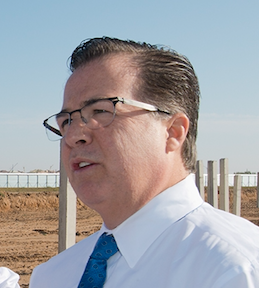UPMC is a 14-billion-dollar integrated global health enterprise, closely linked to the University of Pittsburgh. Twenty years ago it opened a transplant hospital in Sicily. Since then, its International arm has expanded to build hospitals and offer consultancy and other services worldwide, with a special focus on cancer care. Fabio Turone asked UPMC International President Chuck Bogosta about what they do and why.
Fabio Turone: UPMCs international operations have developed rapidly in recent decades, but the impression given is of a strategy that was made up on the go…

Chuck Bogosta: When we first got into this area there was no roadmap. Healthcare is very difficult to globalise. Our strategy from the beginning was the one identified 20 years ago when we opened our first transplant hospital in Sicily. We didn’t believe that the concept of medical tourism was sustainable, so instead of focusing on bringing the patients to the US we are more focused on ensuring that patients don’t have to leave home. Our transplant centre in Sicily started with a strong relationship we had with a hepatologist who started to bring patients in need of a liver transplant to Pittsburgh. He proposed approaching the local authorities and the Vatican. Now the hospital has top outcomes one year after transplant, and is working fully with funding from the Italian National Health Service, with around 5% of income derived from international patients. It’s a great example of how we were able to export something while learning a great deal from the experience.
FT: Are you using the experience in Italy to develop similar models in other countries?
CB: Something that very few other organisations have recognised is that one size does not fit all. It varies by geography, it varies by country. In China for example we provide consulting services, and we would never make an investment. In Ireland we own 50% of a cancer centre, and in partnership with a private healthcare provider we are opening another cancer centre, of which we will own 50%. In Italy we own one-third of the transplant centre in Sicily and 100% of a cancer centre in Rome. We always have at least a management agreement to provide clinical oversight.
FT: How much of your activity is focused on cancer, and do you focus on particular treatment approaches?
CB: At least half of the 12 or so countries and approximately 20 different activities we are involved in are cancer related. We are working with the Union for International Cancer Control (UICC) to develop a model that would be very comprehensive, and include surgical, radiation and medical oncology. In Kazakhstan we are developing a cancer treatment facility and a medical school. In Sicily the plan is to develop a medical school as well. In Colombia we are in talks to develop a medical school in conjunction with the cancer hospital that we have in Bucaramanga. In emerging countries, bringing cancer care up to international standards is particularly important. Every country is different, and we also focus on providing opportunities to cancer professionals within the context of the agreements with local partners.
FT: Some people in Europe worry that the US model might work against the public approach to healthcare
CB: When we go overseas we view it as an opportunity to understand what the needs are and see if we can fill that gap: we don’t necessarily take the approach of bringing the US way of doing things. For instance the cancer centre in Rome is focused on high-end radiotherapy and radiosurgery, for which patients had to go to Milan. We were the first to bring this technology to that part of Italy; that was our main motivation. All of the reimbursement issues, the licensing and regulatory issues, the needs were in place to bring an investment. We see private patients, we see public patients and the Italian Government didn’t have to come up with at least $10 million. I look at it as a great example of a win–win for the Italian Government, since it’s much cheaper to keep patients in Rome.
FT: How do you balance the incentive to make the activity profitable with a commitment to achieve the best outcomes?
CB: There are three reasons why we do what we do. We would never go anywhere where we didn’t believe we can improve the quality of healthcare and – this goes hand in hand – UPMC’s reputation globally. It also has to make good business sense: we have to be able to sustain a financially viable operation. All three of them have to exist. We are a $14 billion organisation, but we essentially are a community asset, guided by community principles: there are no shareholders. We have a bit of a schizophrenic mission: for our organisation in the United States we have to improve the Pittsburgh reputation and support the academic and clinical missions of UPMC. That’s a different perspective from the one we discuss with our partners overseas, in which our number one priority is to improve the quality of healthcare. Pittsburgh evolved from being a heavy industry region to what now we call Meds&Eds, medical and education are the driving economic force today. Each project is unique, but we don’t partner with real estate developers nor with private equity firms, because their focus is completely financial. It’s much more important for us to partner with governments, with health ministries, with healthcare organisations.
Chuck Bogosta is Executive Vice President of UPMC and President of UPMC International. He also leads the UPMC Hillman Cancer Center, which uses a ‘hub and spoke’ network model to allow patients to access high-quality treatment in their local community. Before joining UPMC he was a founder member of Corporate Health Dimensions, which specialised in direct contracting of pharmacies and outpatient clinics for major companies.
<box>



Leave a Reply